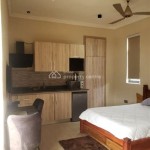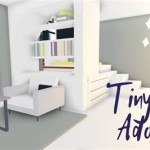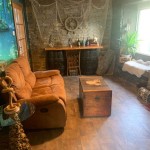How To Decorate a Small Apartment Living Room: Maximizing Space and Style
Decorating a small apartment living room presents a unique set of challenges. The limited square footage demands careful planning and creative solutions to ensure the space is both functional and aesthetically pleasing. Successful small space design prioritizes maximizing available area, creating an illusion of spaciousness, and reflecting the occupant's personal style. This article offers strategies and techniques to effectively decorate a small apartment living room.
Choosing the Right Furniture for Small Spaces
The selection of furniture is paramount in a small living room. Oversized pieces can overwhelm the space, making it feel cramped and uncomfortable. Prioritizing multi-functional furniture and pieces with a smaller footprint is crucial for achieving a balanced and open layout.
Consider a sofa with built-in storage. Many sofas now feature hidden compartments under the cushions or integrated drawers, providing valuable storage for blankets, pillows, or other household items, reducing the need for additional storage furniture that would take up valuable floor space. Look for sofas with clean lines and a low profile. Bulky sofas with rolled arms and high backs tend to visually dominate a room, making it feel smaller. Sofas with a minimalist design and slim arms create a more streamlined and open appearance.
Opt for a smaller coffee table, or consider alternatives entirely. A large coffee table can obstruct traffic flow and consume valuable floor space. Glass-topped coffee tables can create an illusion of more space as they allow light to pass through. Alternatively, consider using nesting tables that can be pulled out when needed and tucked away when not in use, or a stylish ottoman that can serve as both a coffee table and extra seating. Another option is to incorporate a couple of side tables that can be placed beside chairs or the sofa, providing surfaces for drinks and books without taking up as much room as a traditional coffee table.
Avoid bulky armchairs. Instead, choose chairs with a smaller footprint or opt for armless chairs, which take up less visual space. Transparent or acrylic chairs can also create the illusion of more space as they allow light to pass through and don't obstruct the view. Alternatively, consider incorporating floor cushions or poufs for flexible seating options that can be easily moved around or stored away when not in use.
Consider furniture with legs, regardless of type. Furniture that sits directly on the floor can make a room feel grounded and therefore visually smaller. Furniture with exposed legs allows light to pass underneath, creating a sense of airiness and openness. This effect extends to sofas, chairs, and even media consoles.
Optimizing Space with Strategic Layout and Arrangement
The arrangement of furniture significantly impacts the perceived size and functionality of a small living room. A well-planned layout can maximize space, improve traffic flow, and create a comfortable and inviting atmosphere.
Consider the focal point of the room. Every living room should have a focal point, which is usually a fireplace, a large window, or a statement piece of art. Arrange the furniture to accentuate the focal point and create a natural flow of conversation. The focal point should be the first thing that draws the eye upon entering the room.
Float the furniture away from the walls. Instinct may dictate pushing all furniture against the walls to maximize floor space, but this can actually make a room feel smaller and less inviting. Floating furniture, even just a few inches away from the walls, creates a sense of depth and allows the room to breathe. This creates a more inviting atmosphere.
Create distinct zones within the living room. Even in a small space, it's beneficial to delineate different zones for different activities. For example, a reading nook could be created with a comfortable chair, a small bookshelf, and a floor lamp. A conversation area could be arranged around the sofa and coffee table. Defining these zones helps to maximize the functionality of the space and prevent it from feeling cluttered.
Use vertical space effectively. In a small apartment, maximizing vertical space is crucial. Tall bookshelves, wall-mounted shelves, and vertical wall art can draw the eye upward, creating the illusion of higher ceilings and more space. Utilize wall space for storage to minimize clutter on the floor. Consider installing floating shelves to display decorative items or store books. Tall, slender floor lamps can provide ample lighting without taking up valuable floor space.
Pay attention to traffic flow. Ensure there is enough space to move freely around the furniture without bumping into things. Clear pathways are essential for creating a comfortable and functional living room. Consider the placement of doors and windows when arranging furniture to avoid blocking natural light or impeding access.
Enhancing the Illusion of Space with Color, Light, and Decor
The choice of color palette, lighting fixtures, and decorative elements can significantly impact the perceived size and atmosphere of a small living room. Utilizing these elements strategically can enhance the illusion of space and create a visually appealing environment.
Embrace a light and bright color palette. Light colors reflect light, making a room feel brighter and more spacious. Choose pale neutrals such as white, cream, beige, or light gray for the walls and larger furniture pieces. These colors create a neutral backdrop that allows you to add pops of color with accessories and artwork. Avoid dark, saturated colors, which can absorb light and make a room feel smaller and more enclosed.
Incorporate mirrors strategically. Mirrors are a powerful tool for creating the illusion of space. Placing a large mirror on a wall can visually double the size of the room. Position mirrors opposite windows to reflect natural light and brighten the space. Smaller mirrors can be used to add depth and dimension to specific areas of the room.
Maximize natural light. Natural light is essential for making a small living room feel open and airy. Keep windows clean and free of obstructions. Avoid heavy curtains or drapes that block out natural light. Instead, opt for sheer curtains or blinds that allow light to filter through while providing privacy. If natural light is limited, supplement with artificial lighting to brighten the space.
Layer lighting effectively. A well-lit room feels larger and more inviting. Use a combination of ambient, task, and accent lighting to create a layered lighting scheme. Ambient lighting provides overall illumination for the room. Task lighting provides focused light for specific activities, such as reading or working. Accent lighting highlights specific features, such as artwork or architectural details. Dimmers can also be used to adjust the lighting levels to create different moods.
Choose decor carefully. Avoid clutter and excessive ornamentation. Choose a few carefully selected decorative items that reflect your personal style and add visual interest to the room. Consider using large-scale artwork or statement pieces to create a focal point and add drama to the space. Keep surfaces clear and clutter-free to maintain a sense of order and spaciousness. Plants can add life and freshness to the room, but be mindful of the size and placement of plants to avoid overcrowding the space.
Use rugs to define spaces and add visual interest. A well-placed rug can anchor the furniture and create a cohesive seating area. Choose a rug that is large enough to fit under all the front legs of the furniture. Alternatively, a smaller rug can be used to define a specific area, such as a reading nook. Choose rugs with light colors and simple patterns to avoid overwhelming the space. Rugs can also add texture and warmth to a small living room, making it feel more comfortable and inviting.
By carefully considering furniture selection, layout, color palette, lighting, and decor, one can transform a small apartment living room into a stylish, functional, and inviting space that maximizes comfort and visual appeal. The key is to prioritize space optimization and embrace creative solutions tailored to the unique dimensions of the room.

10 Easy Decor Ideas To Arrange A Small Apartment Living Room Spacejoy
:max_bytes(150000):strip_icc()/SFinteriors-27-c01c7c29bea14f859c0f2093ca2092bc-233015c904954d54b4fb59e7bb037629.jpeg?strip=all)
34 Small Apartment Living Room Ideas To Maximize Space And Style

Cozy Small Apartment Ideas For Your Home Designcafe

34 Apartment Decorating Ideas To Personalize Your Al

15 Apartment Living Room Design Ideas And Examples

17 Studio Apartment Design Ideas For Small Spaces Extra Space Storage
:max_bytes(150000):strip_icc()/105-62e30454bc064db0a9014a53c18321e1-4c36e86edfad4a49b6c78adc96e0995d.jpeg?strip=all)
34 Small Apartment Living Room Ideas To Maximize Space And Style

8 Small Apartment Living Room Ideas

50 Small Apartment Living Room Design Decoration Ideas

7 Apartment Decorating And Small Living Room Ideas The Anastasia Co
Related Posts







